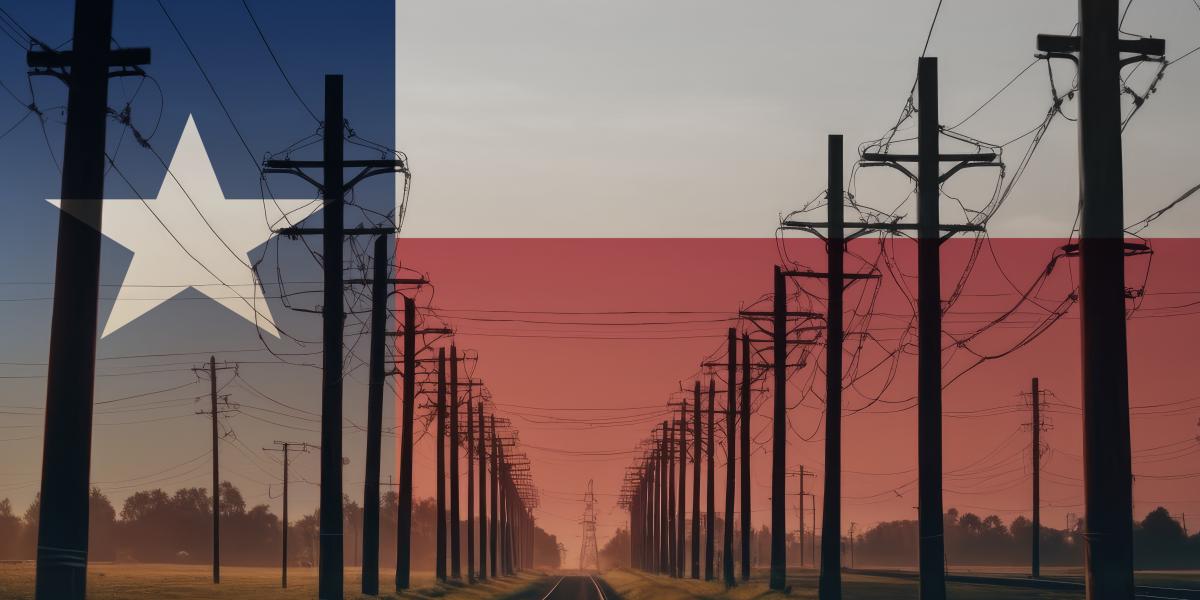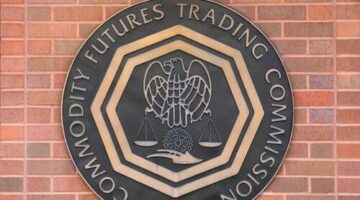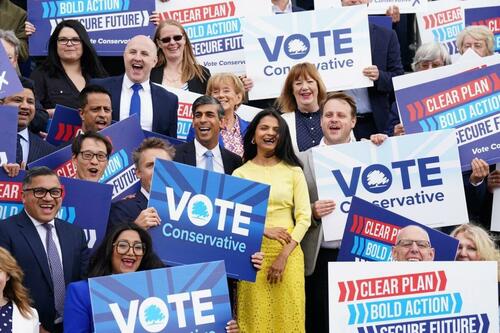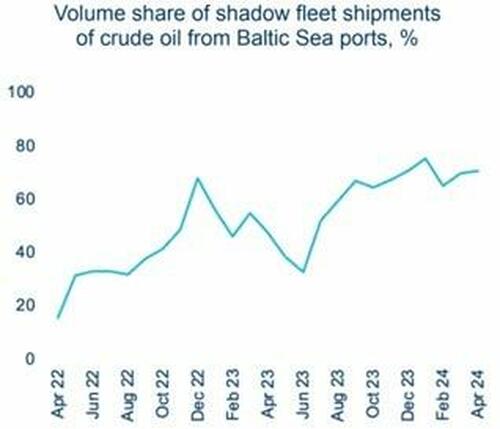
The Political Takeover of the Texas Electricity Market
In June, the Texas Supreme Court rejected a lawsuit claiming that the Public Utility Commission of Texas (PUCT) had broken the law when it set the wholesale price of electricity at $9,000 per megawatt hour for about 80 hours during the Texas blackouts that occurred during Winter Storm Uri in February 2021.
The PUCT’s commissioners had dictated the price of electricity because they believed that market-driven “energy prices across the system…as low as approximately $1,200” did not “accurately reflect the scarcity conditions in the market.” Their decision drove the total cost of electricity for those three days to as high as $38 billion, more than Texans had paid for electricity over the previous 12 months.
The Supreme Court never sought to understand why the Texas Legislature in 1999 determined, “that the public interest in competitive electric markets requires that…electric services and their prices should be determined by customer choices and the normal forces of competition.” Instead, the justices simply posited that, “The Commission has the expertise to manage the electric utility industry; the courts do not.” They did not question whether the PUCT actually could or should manage the almost $50 billion a year Texas electricity market. Their focus was to “ensure that the courts will stay in their lane” by not interfering with regulators.
In his Foundations of the Market-Price System, Milton Shapiro wrote, “[T]hroughout history only two principles have guided the formation of prices in the market place: the free-market principle and the interventionist principle of the ‘political means.’” The political has become the favored means of determining prices in America, even in “conservative” states like Texas.
In the aftermath of the Uri blackouts, Texas Lt. Gov. Dan Patrick backed the political means when he proposed a government “managed capacity market where additional plants are built to provide emergency backup power.” His rationale for the political takeover of the Texas electricity market was that “prices … used as an incentive for investors to build plants … served Texas well for many years, but [that model] failed during the winter storm.” Since then, Gov. Greg Abbott, the Texas Legislature, the Texas electric industry, and many Texas voters have also hopped on the interventionist bandwagon.
In 2022, the PUCT created the ERCOT Contingency Reserve Service (ECRS), which artificially increased the price of electricity by $12 billion in 2023. Then last year the Texas Legislature created, and Texas voters approved, the Texas Energy Fund using $5 billion of taxpayer money. Since then, Abbott and Patrick announced on July 1 they “will seek to expand the program to $10 billion to build more new plants as soon as possible.”
Texas politicians have decided that the political means of determining electricity prices benefit them more than the free market would. They have also convinced many Texas voters that this switch benefits them as well.
The Economic Superiority of Market Prices
Even though most Texas politicians (including Supreme Court justices) are happy with the state’s takeover of the electric grid, the people who elected them should not be. Market prices are superior to government prices when it comes to serving consumers’ interests.
Why is this the case?
Shapiro points us to the answer: “The primary purpose of production is consumption. Man engages in production primarily or ultimately only for the purpose of producing the consumers’ goods he wants, including the capital goods with which to produce the consumers’ goods.” There is no one better to determine the price of capital and consumer goods than those who are producing and consuming them in order to satisfy their needs. It is not going to turn out well when politicians and regulators intervene to set or manipulate prices. This is a commonsense conclusion, but Gary North explains that there are also economic reasons for this:
“Prices are crucial for setting priorities. Without prices, we fly blind. We do not know what things cost. We do not know what people have recently bid in order to buy or rent scarce resources. In a world governed by scarcity, prices are tools of understanding and therefore tools of action. Prices are the most important sources of information that lead to the coordination of competing economic plans of action.”
The information conveyed by prices is most beneficial to market participants when it is fully transmitted to the right people. Friedrich Hayek further describes why this is important:
If we can agree that the economic problem of society is mainly one of rapid adaptation to changes in the particular circumstances of time and place, it would seem to follow that the ultimate decisions must be left to the people who are familiar with these circumstances, who know directly of the relevant changes and of the resources immediately available to meet them. We cannot expect that this problem will be solved by first communicating all this knowledge to a central board which, after integrating all knowledge, issues its orders. … It is in this connection that what I have called the ‘economic calculus’ proper helps us, at least by analogy, to see how this problem can be solved, and in fact is being solved, by the price system.
While a central board cannot solve the economic problem, coordination is still needed. This is the role of entrepreneurs, one that is overlooked or disdained by central planners. According to Frank Shostak, entrepreneurs use price information to bring efficiency—and profit—to the market: “For an entrepreneur to make profits, he must correctly anticipate consumer preferences, the future prices of products and the future prices of the factors of production. Entrepreneurs who excel in their forecasting of future prices make profits, and those that misjudge future prices will suffer losses.”
As regulators manipulate prices, the resulting diminishment of the information contained in prices reduces the efficiency of the market. Entrepreneurs will be much more likely to misjudge future prices if they lose some of the information transmitted through market prices. And consumers, in this case Texans that use and pay for electricity, will be worse off.
Ultimately, price regulation makes us worse off because it interferes with our efforts to economize. Market participants economize because it is how we produce a steady stream of income out of scarce means. Jeffrey Herbener explains this: “For any given end we choose to pursue we always choose the combination of means that we assess as having less value for a given end that we attain as opposed to other combinations of means that have higher value or higher costs.” Societal income and profit are diminished as regulators interfere with the economizing of market participants.
The Ethical Superiority of Markets
The higher cost of electricity relative to its benefits when the government is regulating prices demonstrates that market participants and society overall are better off when prices are set through the market. Austrians don’t need proof to know this is true, yet confirmation of this abounds in the Texas electricity market.
Texas once had the most competitive electricity market in the world. That changed in 2019 when PUCT commissioners gave in to a years-long campaign by thermal generators to artificially increase prices. At the time, prices were artificially depressed because of renewable energy subsidies. But rather than take steps to protect market pricing by directly addressing renewable subsidies, the PUCT—with the Texas Legislature’s support—increased subsidies for thermal generators by artificially increasing prices by 4.3 billion. Texas consumers have been paying more for electricity ever since.
In the five years prior to 2019, federal, state, and local governments increased the cost of electricity in Texas by an average of $3 billion annually. Since then, the average increased cost has been $14 billion. These higher costs take the form of tax credits, subsidized transmission, and manipulation of market prices.
Electricity prices confirm the cost of these measures to Texas businesses and consumers. Wholesale electricity prices averaged $31.18 per megawatt hour from 2014-18. Since then, prices have averaged $76.14. Retail prices show the same trend, though increases lag in the wholesale market. The average price for residential customers was 11.3 cents per kilowatt hour from 2014-18. For the last five years, prices have averaged 12.72 cents. The latest data show March prices at 14.92 cents. At least Texas politicians have not yet imposed California electricity prices (32.47 cents) on their constituents.
Conclusion
Texas politicians have taken over the electricity market because they believe their interests are better served this way. Perhaps this is because they think being labeled anti-green by renewable energy advocates harms their reelection chances more than high electricity prices. Or perhaps they really believe they can solve Texas’ reliability problems better than market participants can. Whatever their reasons, the unwillingness of Texas politicians to “stay in their lane” by serving their constituents is pushing Texans toward California-style energy poverty.
Originally Posted at https://mises.org/
Stay Updated with news.freeptomaineradio.com’s Daily Newsletter
Stay informed! Subscribe to our daily newsletter to receive updates on our latest blog posts directly in your inbox. Don’t let important information get buried by big tech.
Current subscribers:








